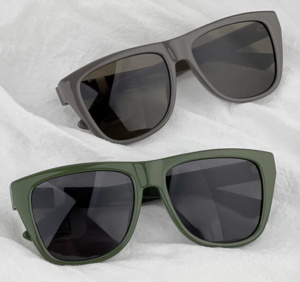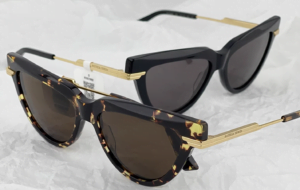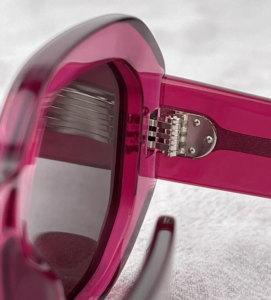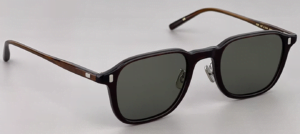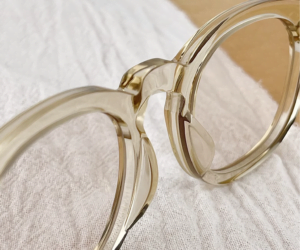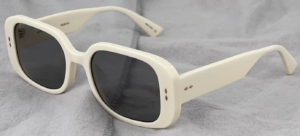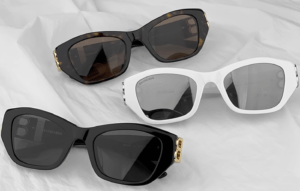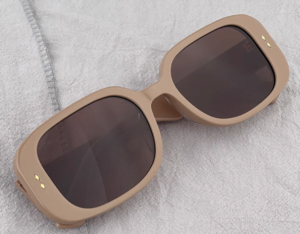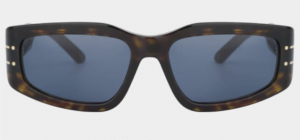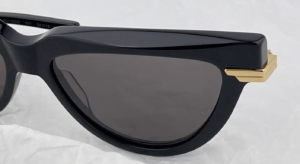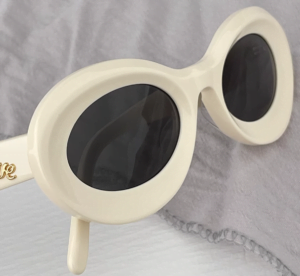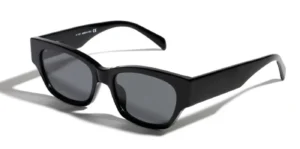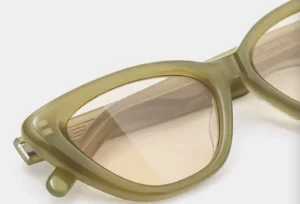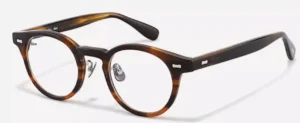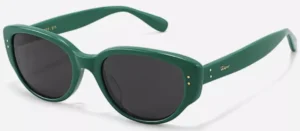Introduction
Fully custom sunglasses enable the creation of eyewear perfect just for your needs, style, and self-expression. With bespoke tailoring, you control every facet from frames to lenses to embellishments. However, successfully navigating the customization process requires deep understanding. In this extensive guide, we’ll provide everything you need to know to design stunning sunglasses made uniquely for you.

We’ll cover:
- Performing facial measurements for ideal fit
- Matching shapes and sizes to facial structure
- Selecting frame materials and colors
- Choosing lens materials for optics and durability
- Tinting and applying treatments like polarization
- Engraving text, adding logos and graphics
- Working with designers to refine options
- Choosing manufacturers for quality and craftsmanship
- Communicating design elements accurately
- Managing production timelines and expectations
- Troubleshooting potential issues
- Ensuring proper fit upon delivery
- Caring for your customized shades
By the end, you’ll feel equipped to create your dream shades and see your vision realized through methodical customization. Let’s get started making your perfect eyewear!
Section 1: Determining Facial Measurements and Structure to Custom Sunglasses
The starting point for a perfect custom sunglass design is taking measurements to determine the structure of your face. Carefully assess:
Face Shape:
- Oval: Face evenly narrows at forehead and jawline. Oval frames complement.
- Round: The face has a softer curved jawline and wide cheekbones. Angular frames balance roundness.
- Square: Forehead, cheekbones, and jawline form right angles. Rounded frames soften edges.
- Heart: The head is the widest, with a narrow rounded jawline. Cat-eye frames are flatter.
- Long: The forehead, cheekbones, and jawline are narrow. Oversize frames and add width.
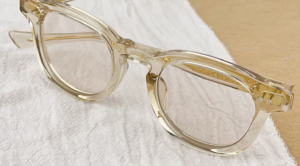
Bridge Size:
- Measure the bridge width between eyes in mm. The standard is 13-18mm.
- Low-nose bridges need adjustable keyhole bridges or double bridges.
- High-nose bridges need taller single-panel bridges.
Temple Length:
- Measure the front corner of the eye to start of ear opening in mm.
- The standard length is 135-145 mm.
- Add or reduce 5-10mm for better fit.

Nose Contour:
- High and prominent bridges may angle frames to avoid imbalance.
- Low bridges may require built-up bridge support.
- Sloped noses match arched browlines.
Eye Size and Set:
- Small closely set eyes need small lenses set closely.
- Large wide-set eyes need larger distant lenses.
- Deep-set eyes match prominent brow bars or thicker frames.
- Shallow-set eyes pair with rimless or thin frames to not overwhelm the face.
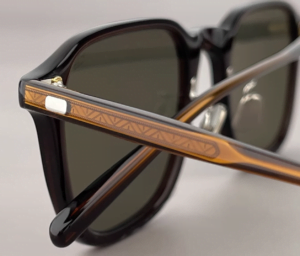
These measurements allow you to select frames and lenses that complement your natural facial structure for an ideal fit. For remote orders, provide clear front and profile photos indicating dimensions.
Section 2: Selecting Frame Shape and Size to Custom Eyewear
With measurements determined, it’s time to select a frame silhouette. Consider:
- Face shape complimenting styles like cat eyes for heart shapes or rounded rectangles on square faces.
- Proportional sizing to avoid oversized or undersized look. Inner corners should align with pupil centers.
- Preferred impressions like studious, creative, or authoritative based on styling.

- Lifestyle needs like athletic wraparounds for sports or minimalist thin frames for formal wear.
- Balancing asymmetric or irregular features through offset shapes.
- Prescription considerations like smaller lenses for progressives or monocular frames for single vision needs.
- Weight distribution for long-term comfort. Heavy plastic frames cause ear strain over time.
Take time to explore different shapes. Now let’s consider frame materials…
Section 3: Picking Frame Materials for Custom Sunglasses
Materials impact weight, durability, flexibility, and look. Assess options like:
Metals:
Titanium – Extremely strong yet lightweight. Hypoallergenic properties. Contemporary styling.
Stainless Steel – Also lightweight with high strength. Can show fingerprints. Distinctive sheen.
Aluminum – Cheaper but still durable. Matte finishes hide fingerprints. Can feel slippery.
Gold Fill – 14k or 18k gold layered over brass core offers lustrous shine. Hypoallergenic.
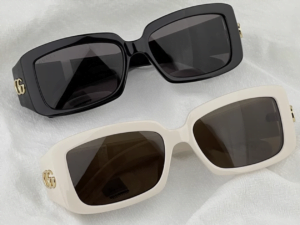
Plastics:
Acetate – Lightweight flexibility. Vibrant colors and translucent effects. Can be delicate.
Nylon – Extreme durability and adjustable fit. Limited to sporty styles.
Ultem – Advanced resin used in aerospace. Nearly indestructible but expensive.
Natural:
Wood – Elegant visible grain patterns. Over time can crack or warp. Replaceable temples.
Horn – Subtle organic patterns. Derived from sustainable buffalo or cattle byproducts.
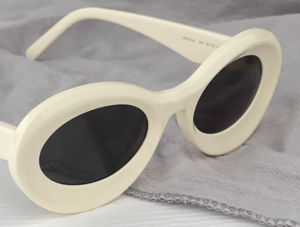
Custom:
Mazzucchelli – Premier Italian acetate craftsmanship with intricate patterns.
Precious materials – Gold, platinum, and gemstones offer ultimate customization.
Combinations – Mix metals and plastics for complementary benefits. Adds cost.
Research materials for the right balance of looks, comfort, durability, and price.
Section 4: Selecting Lens Material and Tint to Customized Sunglasses
Like frames, lens configuration greatly impacts performance and aesthetics:
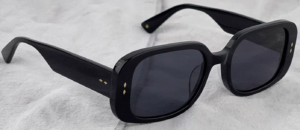
Materials:
Polycarbonate – Affordable and impact resistant. Standard for non-Rx sunglasses. Blue light blocking.
Trivex – Enhanced optics with impact resistance. Ideal for strong prescriptions.
High Index – Greater lens thinness for stronger prescriptions. More reflective.
Glass – Unmatched clarity but heavy and shatter-prone. Mainly non-corrective.
Photochromic – Self-tinting lenses for flexible light conditions. Activate somewhat slowly.
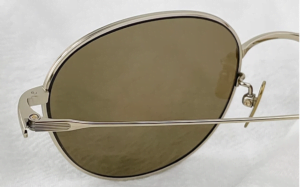
Tints:
Grey – Most popular tint cutting glare without distortion. Darkness varies from 10-80%.
Brown – Also common, enriching contrast in foggy or hazy conditions. 10-80% darkness.
Yellow – Boosts contrast and depth perception. 10-30% darkness to avoid heavy tinting.
Green – Subtly enhances definition while allowing ambient color recognition.
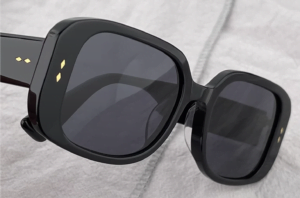
Rose or purple – Minimal 10% tint solely for fashion purposes. Avoid darker roses.
Mirrored – Reflective metallic coating. Cosmetic effect but cuts the light transmission.
Achieve the right balance of optics, protection, and style through lens combinations optimized for where and how you will wear the eyewear.
Section 5: Considering Lens Treatments to Custom Eyeglasses
Special lens treatments also provide added benefits:
Polarization – Reduces intense reflected glare. Excellent for driving, fishing, hiking, and water sports.
Anti-Reflective – Minimizes distracting lens reflections and ghost images via nano-coating.
Oleophobic – Repels skin oils, water, and smudges for easy cleaning. Highly scratch-resistant.
Hydrophobic – Causes water to bead up and roll off lenses through nano-coating integration.
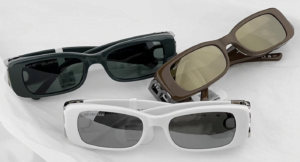
Blue light filtering – Limits exposure to blue light wavelengths from digital screens that cause eyestrain.
Photochromic – As discussed earlier, these self-tinting lenses adapt transmission based on ambient light.
Flash mirror coating – Adds striking reflective lens aesthetics without full light blockage.
Gradient tint – Darkens tint from top to bottom to shield bright sunlight while allowing lower visibility.
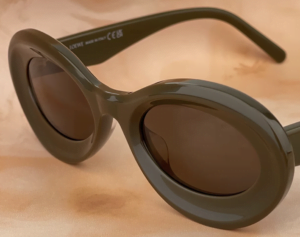
Scratch-resistant – Protects lenses against superficial scrapes and scuffs. Standard on most lenses.
UV protection – Also standard on polycarbonate and Trivex lenses. Absorbs 100% UVA/UVB rays.
Determine if benefits like glare reduction or water beading warrant extra cost. Avoid unnecessary over-engineering.
Section 6: Incorporating Custom Glasses Artwork and Details
For true personalization, consider custom artwork additions:
Text Engraving – Add inspirational phrases, initials, and signatures in decorative lettering. Keep concise for legibility.
Logos – Integrate personal, family, or brand logos. Vector art formats work best for precision.
Decals – Museum-quality decals allow the incorporation of images, photographs, or graphics.
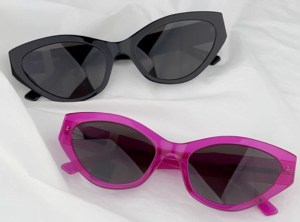
Patterns – Subtle engraved filigree provides intrigue without overtaking aesthetics.
Inlays – Wood frames allow multi-layered inlays for wording or ornate visuals.
Charms – Decorative mini charms on hinges, temples, or fronts add flair.
Medallions – Small custom metal medallions at temples or on fronts provide sophisticated personalization.
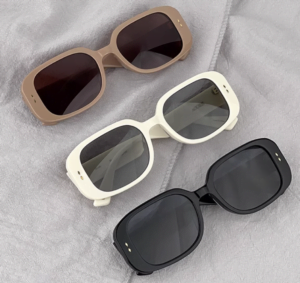
Enamel fill – Colorful enamel inlays add vibrant interest to metal engravings.
Gemstones – For luxury bespoke eyewear, incorporate diamonds, emeralds, etc tastefully.
Work closely with designers on positioning embellishments proportionally. Now let’s discuss the design process…
Section 7: Working with Custom Eyewear Designers
Collaborating with experienced designers simplifies customization:
At this point, you should have an idea of designing sunglasses and how to create your own eyewear brand.
- Provide inspiration – Share examples of textures, shapes, colors, and embellishments speaking to you.
- Be open to guidance – Designers may steer you away from unflattering or impractical options. Trust their expertise.

- Request realistic renderings – Ask to visualize combinations digitally for clearer decision-making.
- Dial in details gradually – Finalize basics like shapes and colors first before custom graphics.
- Manage complexity – Limit intricate patterns and details that are difficult to manufacture.
- Control costs – Designers can steer you towards more premium materials. Realign if needed.
- Maintain open communication – Clearly convey the vision and respond promptly to proofs for revisions.
With a collaborative designer partnership, customization gets much easier. Now let’s pick manufacturers.
Section 8: Selecting Sunglasses Manufacturers to Custom
Choosing vendors with custom expertise is crucial:
- Specialized small batch capabilities – Avoid companies geared solely for mass production.
- Made in Italy, France, Japan, or Germany – Reputation for artisanship and quality.
- Showcase custom examples – Review past bespoke projects for intricacy.

- Responsive communication – Much back and forth is required for perfect outcomes.
- Digital renderings – The ability to preview designs digitally first is invaluable.
- Multi-round sampling – Vendors should provide physical prototypes for inspection.
- Master engravers and craftsmen – Look for seasoned experts recognized for mastery of finishes.

- Tight quality control – ISO certifications and procedures ensure perfection.
- Positive bespoke customer reviews – Check testimonials and forums for feedback.
Take time to find ideal manufacturing partners invested in flawless execution. Now let’s detail the ordering process…
Section 9: Submitting a Detailed Custom Sunglasses Order
To avoid errors, meticulously compile details including:
- Facial measurements – Pupil distance, bridge width, temple length.
- Frame choices – Shape, size, colors, customizations. Share style inspirations.

- Lens selections – Material, tint, polarization, blue light filter, treatments.
- Vision needs – Correction strength, astigmatism axis, bifocal type.
- Artwork – Text content and layouts, logo integration, graphic treatments.
- Production timeline – Understand lead times for sourcing materials and fabrication.

- Return policies – Understand terms for refunds if needed.
- Warranties – Length of defect coverage.
- Payment terms – Deposits or payment in full. Beware excessive upfront payment.
Comprehensive details reduce back and forth. Now let’s review timelines…
Section 10: Managing Production Timelines When Custom Sunglasses
Understand realistic timeframes:
- Sourcing exotic materials – 1-2 weeks minimum to procure special acetates, metals, or lenses.
- Prototype sampling – 2-3 rounds over 2-3 weeks to finesse designs.
- Unique tooling or molds – Potentially 4-6 weeks for intricate shaping requirements.

- Frame production – 4-6 weeks for hand craftsmanship. Additional texturing extends timelines.
- Lens generation – 1-2 weeks for advanced optics like wave-filtering photochromic lenses.
- Quality assurance – 1 week for multi-point inspection ensuring perfection.
- Shipping – 1 week for standard ground freight. 3-5 days for expedited air.
Pad schedules generously and confirm key milestones. Supply chain issues can quickly derail timetables. Let’s discuss troubleshooting…
Section 11: Troubleshooting Customization Sunglasses Issues
Despite best efforts, customization risks complications:
- Artwork challenges – Simplify complex patterns. Start with simpler proofs first.
- Lens fractures – Defective lens blanks lead to restarts. Build in buffers.
- Hinge issues – Weight imbalances may require re-engineering.

- Material flaws – Imperfect slabs happen. Vet suppliers thoroughly.
- Feature regret – Limit mid-process changes. Alterations complicate work streams.
- Unrealistic expectations – Understand intrinsic material limits.
- Lack of QC updates – Ensure manufacturers provide open production updates.
- Shipping damage – Inspect deliveries thoroughly. Insure shipments.

With experienced partners and managed expectations, most issues are addressable through open communication and potential timeline extensions. Patience pays off.
Section 12: Inspecting Completed Custom Eyewear
Upon receiving your bespoke shades:
- Closely inspect frames for any manufacturing defects like uneven joints.
- Check lenses for scratches, chips, bubbles, or debris. Hold up to light.
- Ensure embellishments like engraving align perfectly. Use magnification.

- Assess overall balance and comfort when worn. Adjust as needed.
- Request final tweaks like filing bridge edges or adjusting curvature.
- Confirm polarization and tint performance in sunlight.
- Read warranty details. Understand coverage terms.
Take time to confirm flawless delivery before use. Now let’s discuss care…
Section 13: Caring for Your Custom Eyewear
Keep bespoke shades looking impeccable:
- Follow specific care instructions based on materials.
- Consider premium cases to prevent scratching.
- Avoid dropping frames which can knock joints loose.

- Gently clean lenses using microfiber cloths only. No paper products.
- Use small amounts of warm water or lens cleaner. No harsh chemicals.
- Store in protective cases when not worn.
- Removable lenses facilitate cleaning. Insert/remove carefully.
- See an optician annually for adjustment tightening if needed.
With attentive care, your customized sunglasses will withstand years of use with their original appeal intact.
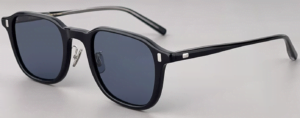
Conclusion
We’ve covered everything required to create fully tailored custom sunglasses just for you. By methodically measuring facial structure, exploring frame and lens materials, judiciously incorporating custom details, vetting Custom Sunglasses Manufacturers, and clearly communicating visions, your dream eyewear can become a reality. Approach the process with patience and reasonable timeline expectations. The ability to personalize high-quality shades delivering ultimate comfort, performance, and style makes the effort worthwhile. You’ll love finally wearing sunglasses uniquely your own.
